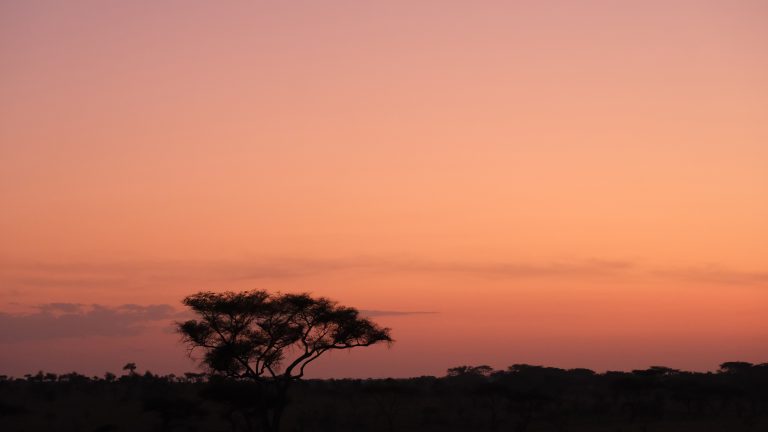Xi’an 4-Day Itinerary: Complete Guide to Terracotta Warriors, Mt. Hua & Museums
History, food, mountains, and a little chaos – Xi’an is where ancient China comes alive.
Table of Contents
- Introduction: Why Visit Xi’an
- Xi’an 4-Day Itinerary (6 Days Including Travel)
- Top Attractions & How to Book
- Transportation Guide
- Where to Stay in Xi’an
- Timing, Weather & Packing Tips
- Travel Essentials in China
- Budget & Fitness Notes
- Appendix: How to Book Shaanxi History Museum on WeChat
Introduction: Why Visit Xi’an
Xi’an (西安) is like China’s ultimate mash-up of history, culture, and food. Once known as Chang’an, it was the capital of more than a dozen dynasties and the eastern starting point of the Silk Road – the place where emperors dreamed big.
The star attraction here is the Terracotta Army (兵马俑) – thousands of life-sized soldiers built to guard the tomb of Qin Shi Huang, China’s first emperor. It’s one of those “believe the hype” sights – even more surreal in person than in photos.
But Xi’an isn’t just an open-air museum. Its street food scene is legendary: roujiamo (the original “Chinese burger”), chewy biangbiang noodles, and late-night barbecue skewers that perfume the entire Muslim Quarter. Add to that its walkable old city walls, tree-lined avenues, and a backdrop of mountains like Mt. Hua (华山), and you’ve got one of the most complete destinations in China – part ancient capital, part modern energy, all delicious.
This trip was a little special for me – I finally visited Xi’an with my dad in spring 2025. We spent 4 full days and 5 nights in the city, 6 days total including flights. The pace was comfortable, designed to mix sightseeing with time to rest, eat, and just wander.
If you’re planning your own trip, this guide combines our personal 4-day itinerary with a detailed travel guide – including how to book the hardest museum ticket in China, where to stay, what to pack, and how to get around.
4-Day Xi’an Itinerary (6 Days Total Including Travel)
Day 0: Arrival & Getting Settled
Our flight from Beijing was delayed a couple of hours – not ideal, but at least we made it. We took a taxi from the airport straight to Yixi Designer Hotel, a comfortable and modern boutique stay in the Beilin area. After a quick rest, we stretched our legs with a short evening walk and dinner nearby.
Day 1: Shaanxi History Museum & Big Goose Pagoda
We started our first day with a heavy hitter: Shaanxi History Museum (陕西历史博物馆). We spent most of the morning (and early afternoon) there before heading out for lunch just outside the museum grounds. Later, we took a short bus ride to the Giant Wild Goose Pagoda (大雁塔), one of Xi’an’s most recognizable landmarks.

Gilt silver jar with pattern of dancing horse. There is a touching story behind the dancing horses: they were trained to dance with music for the emperor for years, but were later considered evil and killed by the rioters who didn’t understand their elegant moves. I almost cried hearing this story.
Day 2: The Terracotta Army
We took a taxi to the Emperor Qinshihuang’s Mausoleum Site Museum (秦始皇帝陵博物院) early in the morning to beat the crowds. We joined a half-day guided tour, starting from Qin bronze chariot, and then the Terracotta Army, finished early afternoon, and skipped nearby Huaqing Palace to give my dad some rest time.
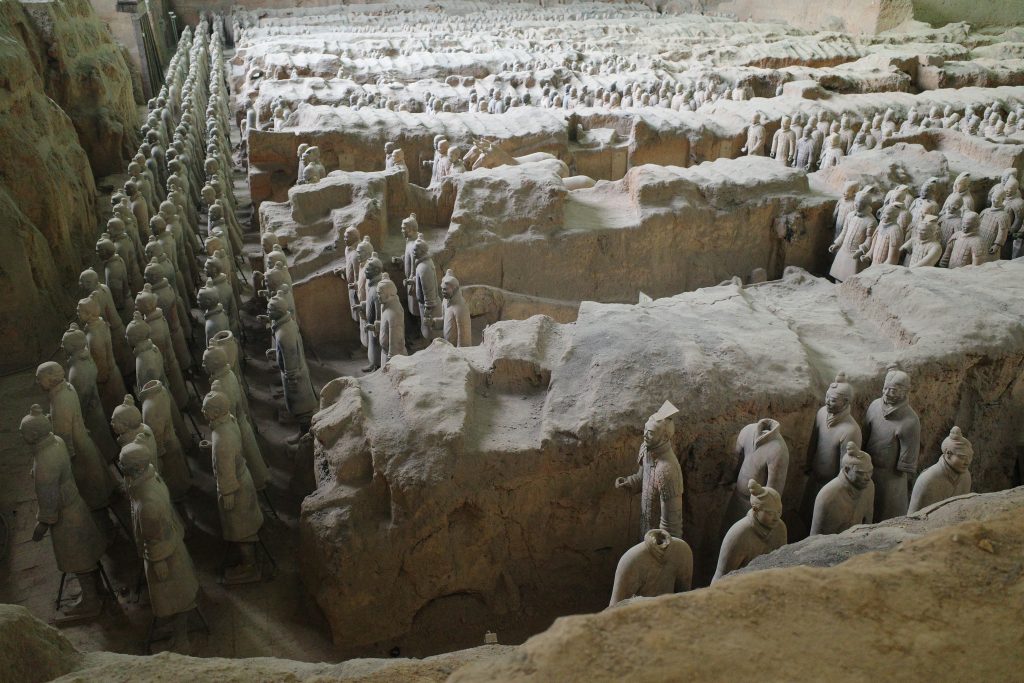
Army pit No.1 – the largest pit – archaeologists estimate it may hold up to ~6,000 warriors and horses, but only about ~2,000 or so have been excavated and are on display. Each one was made to mimic exactly like a real person, including eyelids and palm prints.
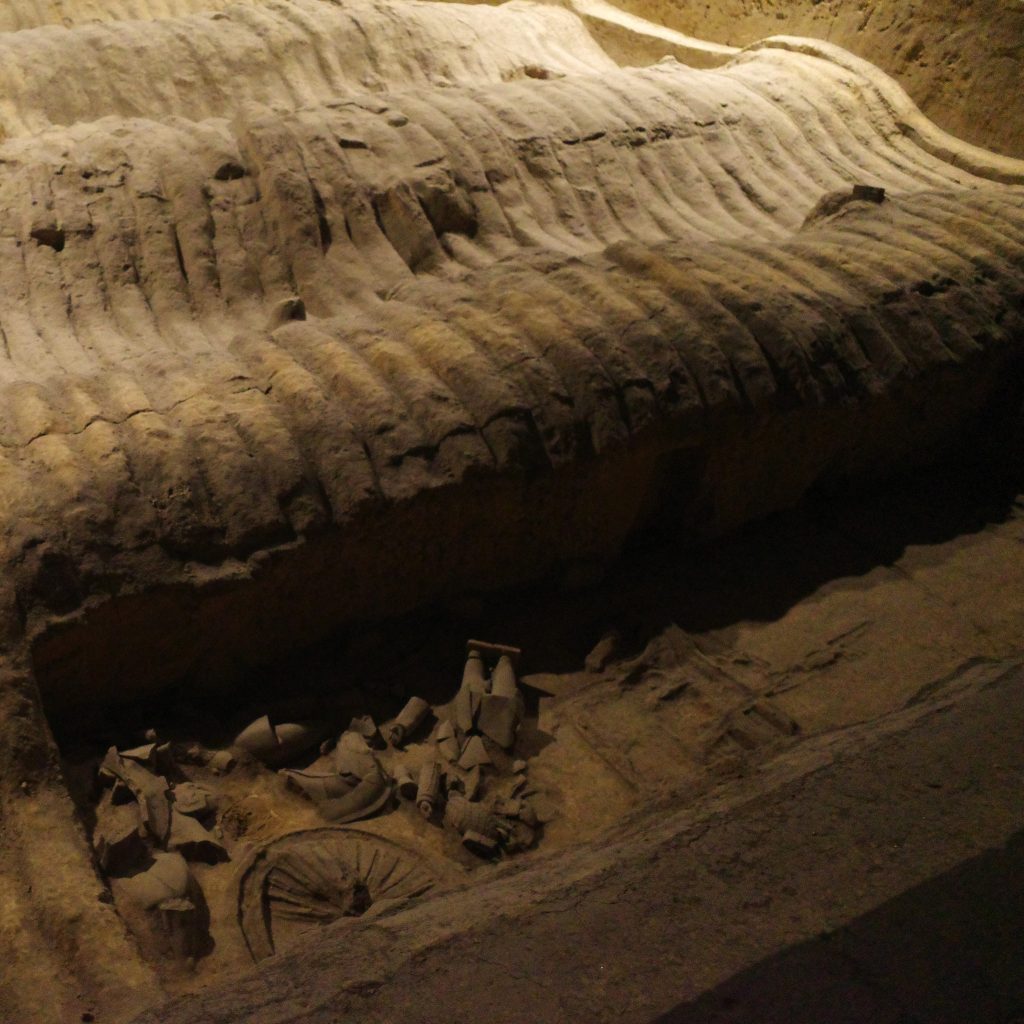
Army pit No.2 – a mixed-force pit (cavalry, chariots, archers) with about 1,300–1,400 figures excavated, though significant areas remain unexcavated for preservation so exact totals vary
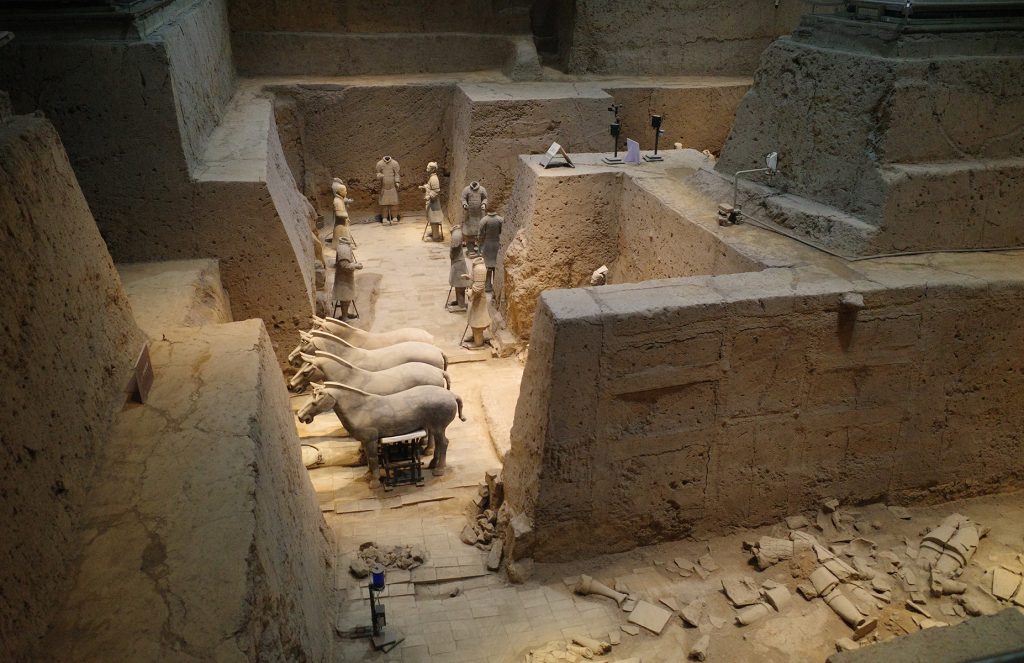
Army Pit No. 3 – command center of the entire formation, containing around 68 high-ranking officers and generals arranged for battle planning and command.
Day 3: Day Trip to Mt. Hua (华山)
We took the subway to Xi’an North Station (西安北站), then hopped on a high-speed train to Huashan North (华山北站). From there, a short bus ride took us to the entrance of Mt. Hua. We took the gondola up to the West Peak, walked across to the North Peak, and descended by a different cable line. It’s not an easy walk even after taking the gondola (lots of stairs and steep paths), but the views are jaw-dropping.
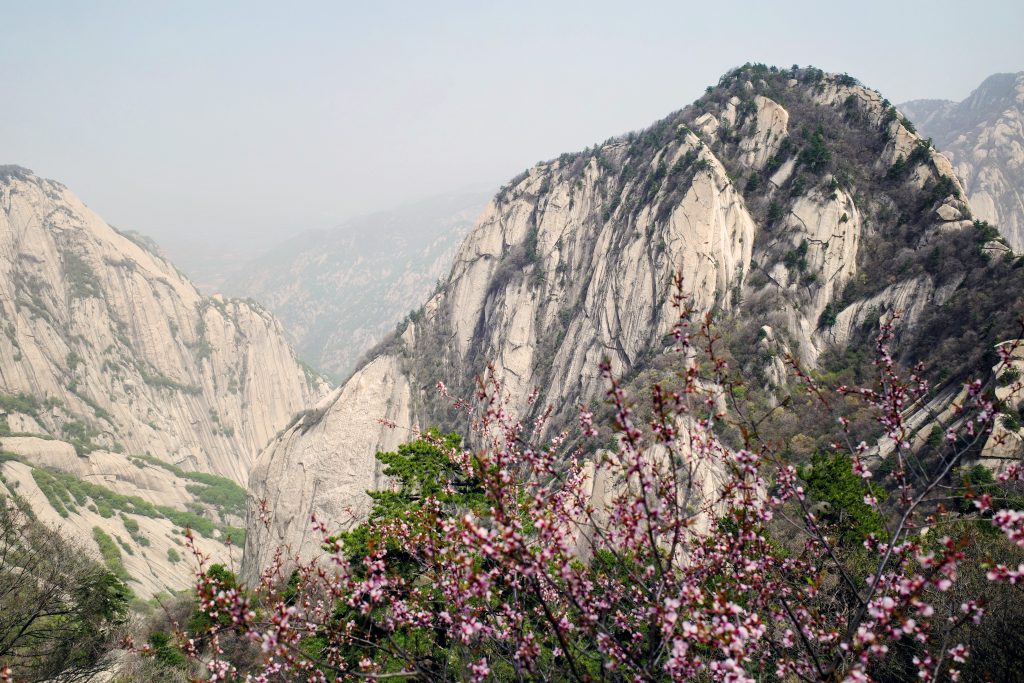
View froom Mt. Hua near the West Peak
Day 4: Beilin Calligraphy Museum & City Walk
As a calligraphy lover, this day was my personal highlight. The Beilin Museum (碑林博物馆) houses the world’s largest collection of ancient stone steles – like a massive open-air library of carved Chinese characters. We had food nearby, and walked around Bell Tower, Drum Tower, and the Muslim Quarter before heading back to rest. I squeezed in a short indoor climbing session near our hotel.

A picture of Mt. Hua. Although it looks rather arbitrary (写意), it’s accurate to meters (写实)
Day 5: Fly Out
A leisurely morning, breakfast, and back to the airport. Our Xi’an adventure wrapped up just as planned.
Top Attractions & How to Book
1. Terracotta Warriors (Emperor Qinshihuang’s Mausoleum Site Museum 秦始皇帝陵博物院)
Why go:
It’s China’s most famous archaeological site for good reason – a jaw-dropping monument to ambition and craftsmanship. The Emperor Qinshihuang’s Mausoleum Site Museum (秦始皇帝陵博物院) includes several pits filled with thousands of life-sized soldiers, horses, and chariots. Each figure has distinct facial features – no two are the same.
Please also pay equal attention – if not more – to the Qin bronze chariots (铜车马). These intricate, half-sized carriages weren’t for the army but for the emperor himself, complete with four bronze horses, gold inlays, and astonishing detail down to the reins. While the warriors show his power on Earth, the chariots symbolize his journey through eternity – and honestly, they’re every bit as breathtaking once you realize how advanced they are for 2,000 years ago. hey’re also among the national treasures that can’t be exhibited outside China, so take your time admiring them while you’re in Xi’an.

Qin Bronze Chariot. There are 81 in total and only two were dug out, fearing the color layer would peel off like these two (they were colored, the horses were originally in pure white).
Booking:
- Easiest option: Trip.com booking page.
- Price: ¥120 per adult (same as official WeChat).
- I highly recommend joining a guided tour – available on the same page. I normally skip organized tours, but this is the one place where a guide makes a big difference. Otherwise, it’s easy to miss the backstories behind each excavation pit.
Getting there: 45 minutes from downtown by taxi or Didi.
2. Shaanxi History Museum (陕西历史博物馆)
Why go: Consistently ranked among the top five museums in China, it’s an absolute must for anyone interested in Chinese civilization. Even among China’s world-class museums, this one stands out. The Shaanxi History Museum traces over 1,000 years when Xi’an was the heart of China’s empires, from the Zhou to Tang dynasties. Inside, you’ll find treasures that rarely leave the country – Tang Dynasty tri-colored pottery (唐三彩), intricately cast Zhou bronzes, Han jade ornaments, and murals from Tang tombs that bring ancient court life vividly to life.

五代耀州窑青釉刻花提梁倒流壶 Five Dynasties Yaozhou Kiln Green-Glaze Incised “Magic” Teapot
A rare 10th-century Yaozhou kiln teapot with carved floral decoration, phoenix-shaped handle, and a clever “reverse flow” design.
Booking:
- The basic exhibition is free but must be reserved in advance through WeChat (usually 5 days ahead at 5 p.m. local time).
- Foreign visitors often find it easier to buy the full ticket (which includes all three exhibitions) directly from Trip.com booking page. The rate is the same as purchasing inside the museum.
- If you’re Chinese or can navigate WeChat, see the detailed Appendix below for the full WeChat booking walkthrough.
3. Beilin Museum (碑林博物馆)
Why go: Home to the world’s oldest and largest collection of stone steles, the Xi’an Beilin Museum (西安碑林博物馆) is a paradise for calligraphy lovers and anyone fascinated by inscriptions. The museum houses over 4,000 engraved stone tablets, some dating back nearly 2,000 years, recording everything from Confucian classics to imperial edicts and famous calligraphers’ masterpieces. Walking through its courtyards feels like stepping into a living gallery of Chinese script – each stone a time capsule of artistry, philosophy, and politics. Even if you can’t read the characters, the flow and rhythm of the brushwork carved in stone are mesmerizing to look at.

Simplified contour lines of the Five Great Mountains, with Mt. Hua at the left bottom corner.
Booking:
- On WeChat (西安碑林博物馆 → 在线购票), or Trip.com link here.
- Located within the old city, perfect to pair with a walk to the Bell & Drum Towers or Muslim Quarter.
4. Mt. Hua (华山)
Why go: One of China’s Five Great Mountains, Mt. Hua (华山) is rugged, spiritual, and impossibly dramatic – all soaring cliffs and blade-thin ridgelines that look like they were drawn with a single brushstroke. You can reach the peaks by gondola (a breathtaking ride in itself) and wander along narrow paths connecting temples and viewpoints.
The mountain is also home to the legendary Plank Walk in the Sky (长空栈道) – a heart-stopping cliffside walkway bolted to the rock face. I didn’t attempt that part (long queue), but even without it, standing atop those ridges gives you a real sense of why this mountain has inspired pilgrims, poets, and thrill-seekers for centuries.

View from Mt. Hua near the North Peak
Route Tips:
- A popular route is to take the gondola up to the West Peak and descend via the North Peak to see more without backtracking.
- To minimize walking, you can take the gondola up and down from the same peak – usually West Peak.
- Hikers can take the old trail up the North Peak (long but quiet).
- Check weather – strong winds can close the gondolas.
- Go early if you can – it gets crowded fast.
Booking:
- Full ticket, gondola and transport packages available on Trip.com booking page.
Getting there:
- 30-minute high-speed train from Xi’an North to Huashan North. Tickets can be bought on Trip.com booking page or in person. (Roughly $10)
- Shuttle to the entrance, then gondola.

Cat we spotted on Mt. Hua
Transportation Guide
If you’re following a similar itinerary (Terracotta + Mt. Hua as day trips), you won’t need a rental car.
- In the city: Didi (China’s Uber) works perfectly. The subway and buses are convenient and cheap.
- To Terracotta Warriors: Taxi or Didi is fastest.
- To Mt. Hua: High-speed train (Xi’an North → Huashan North, 30 min).
- To Museums: All major museums are within the Beilin or Dayanta areas.
Download Didi Chuxing before your trip and consider enabling WeChat Pay or Alipay for seamless travel.
Where to Stay
Best Areas:
- Beilin District: Central, walkable, full of cultural sites (Beilin Museum, City Wall, Bell & Drum Towers).
- Dayanta Area: Slightly south, quieter, near the Big Goose Pagoda and Shaanxi History Museum.
Hotels I Recommend:
- Yixi Designer Hotel – Spacious family rooms, modern design, great lighting, and quiet (our pick).
- W Xi’an or Westin Xi’an – For couples or travelers who want comfort near the Pagoda area.
- Eastern House Xi’an – Boutique hotel with excellent location inside the old city.
- Sofitel Xi’an – One of the few luxury options inside the walls.
Timing, Weather & Packing
Xi’an has a temperate continental monsoon climate – hot humid summers and cold dry winters. So the best time to visit is:
- March–May (spring): Avoid Labor Day Holiday May 1-7 when crowds reach max chaos
- September–early November (autumn): Avoid National Holiday Oct 1–7
Packing tip:
Think Washington D.C. in spring or fall – layers for warm days and cool nights.
Travel Essentials in China
- English guides available at all major attractions except Mt. Hua.
- Google services don’t work in China – download Baidu Maps / Gaode Maps, or use Bing for search. If you’re on Google Fi, it usually bypasses China’s firewall automatically. But Google Maps isn’t as comprehensive in China.
- For transport: use Didi Chuxing.
- For payments: WeChat Pay or Alipay (set up before your trip); small cash still accepted in most places.
Budget & Fitness Notes
Approximate budget:
- Hotels: $150–200/night for mid-range comfort
- Tickets & tours (Terracotta, Mt. Hua, museums): ~$200 total / pp
- Food: $10–20 per meal for local cuisine
- Transport: ~$100 / pp for taxis, trains, and buses
Fitness considerations:
- Museums involve a lot of walking but are flat.
- Mt. Hua requires stairs and uneven terrain even with gondolas – fine for most active travelers.
Appendix: How to Book Shaanxi History Museum on WeChat
If you have WeChat, you can book the basic exhibition directly for free.
- Open WeChat → Search “陕西历史博物馆” (official account).
- Tap “服务” → “门票预约” → “参观预约.”
- Read the notice, tap “我已确认完成阅读,” then “下一步.”
- Choose “陕西历史博物馆本馆.”
- Add visitor info (name, ID/passport).
- At 5 p.m., 5 days before your visit, open again and book your slot.
If that sounds like too much hassle, Trip.com offers the full 3-exhibition ticket at the same price and accepts foreign cards – far easier for non-residents.
Final Thoughts
Xi’an is one of those rare cities that bridges 3,000 years of history without feeling stuck in the past. From the clay soldiers of the Terracotta Army to the living art of the Beilin steles, it’s a place that makes history tangible.
Traveling here with my dad slowed down the pace, but that ended up being perfect. We had time to actually see Xi’an instead of racing through it. If you plan your visit right, this city will feed your brain, your stomach, and maybe even your soul.
Want to see more guide like this? Join my newsletter!

